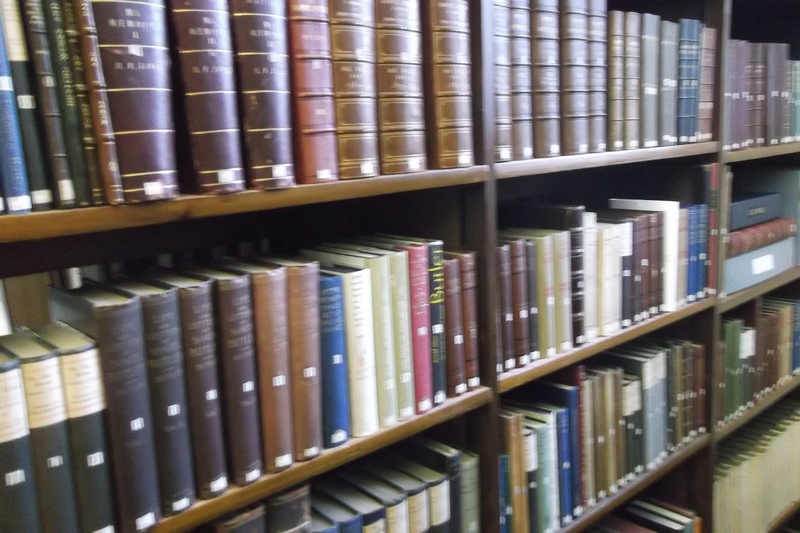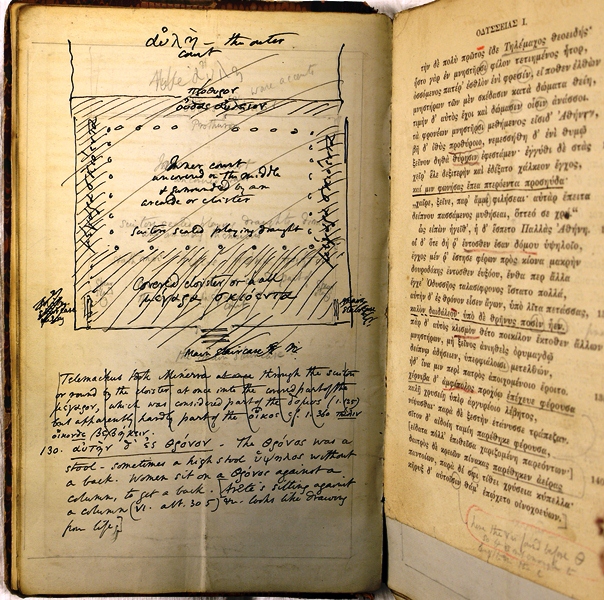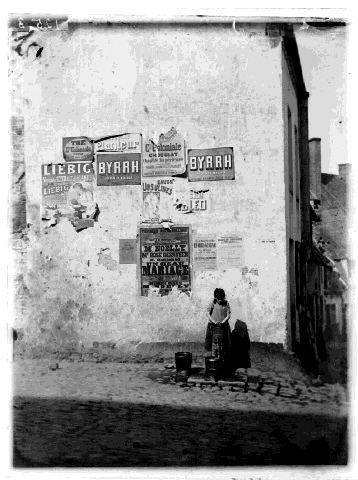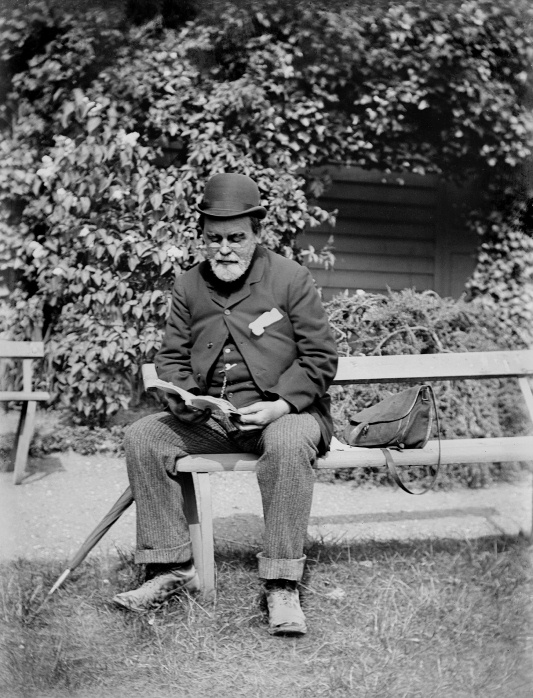Month 24 (June 2013)
In this final month of the Butler Project I completed the cataloguing of the 600 or so books in the Butler Collection. Finishing with section V (books formerly the property of Samuel Butler) was a lovely way to round off the past two years of cataloguing work; delving into someone’s private library really gives you a sense of their living personality. Butler read unusually widely, but when it came to acquiring books he was particularly discriminating. ‘I believe I have the smallest library of any literary man in London, and I have no wish to increase it’, he wrote in an essay (‘Ramblings in Cheapside’) published in 1890. ‘I keep my books at the British Museum and at Mudie’s, and it makes me very angry if anyone gives me one for my private library… Webster's Dictionary, Whitaker's Almanack, and Bradshaw's Railway Guide should be sufficient for any ordinary library; it will be time enough to go beyond these when the mass of useful and entertaining matter which they provide has been mastered.’

Characteristic wit aside, Butler’s personal collection amounts to about 70 volumes, encompassing science, theology, history, biography, poetry and classical literature, and a number of the books are extensively annotated, providing valuable insights into his reading habits. You can read a short illustrated article about some of the volumes in the collection here (as part of the Library’s Special Collections Spotlight).

Enabling people to browse and search the complete Butler Collection online was one of the major aims of the Butler Project. The books are now catalogued on iDiscover, along with the Library’s other bibliographic holdings, and the rest of the collection, being archival in nature, is catalogued on Janus. We hope the catalogue will remain a useful tool for researchers worldwide in the decades to come – which might just see a significant revival in Butler studies.

Another worthwhile achievement of the project has been to oversee the digitization of the vast collection of Butler’s original photographic negatives. This very time-consuming, expensive and specialized work was begun some years ago, and it’s great to have it finally completed. As well as retaining the original glass plate negatives in as near to a stable physical condition as is possible for material of this kind, the Library now possesses high-resolution scans of each negative, ensuring the preservation of the original images even while the physical artefacts (inevitably) deteriorate. The digital scans can also be printed for use in future exhibitions and publications, enabling an ever-wider audience to enjoy Butler’s quite phenomenal photographic legacy. (Don’t forget you can view more than 250 of his photographs on the website via the Butler on the Map gallery.)

Although the Samuel Butler Project has come to an end, the associated online resources (which include exhibitions, talk recordings, articles and education activities) will continue to be available via the website. All that remains here is to thank the Heritage Lottery Fund and St John’s College for funding the project, which has given almost 3000 people the opportunity to learn about one of the most intriguing, inspiring and underappreciated talents of the nineteenth century. I have thoroughly enjoyed working with this unique collection over the past two years, and have learnt a huge amount in the process. It’s been a pleasure to share some of my experiences with you – so thank you for reading!
With best wishes,
Rebecca, Butler Project Associate 2011-13